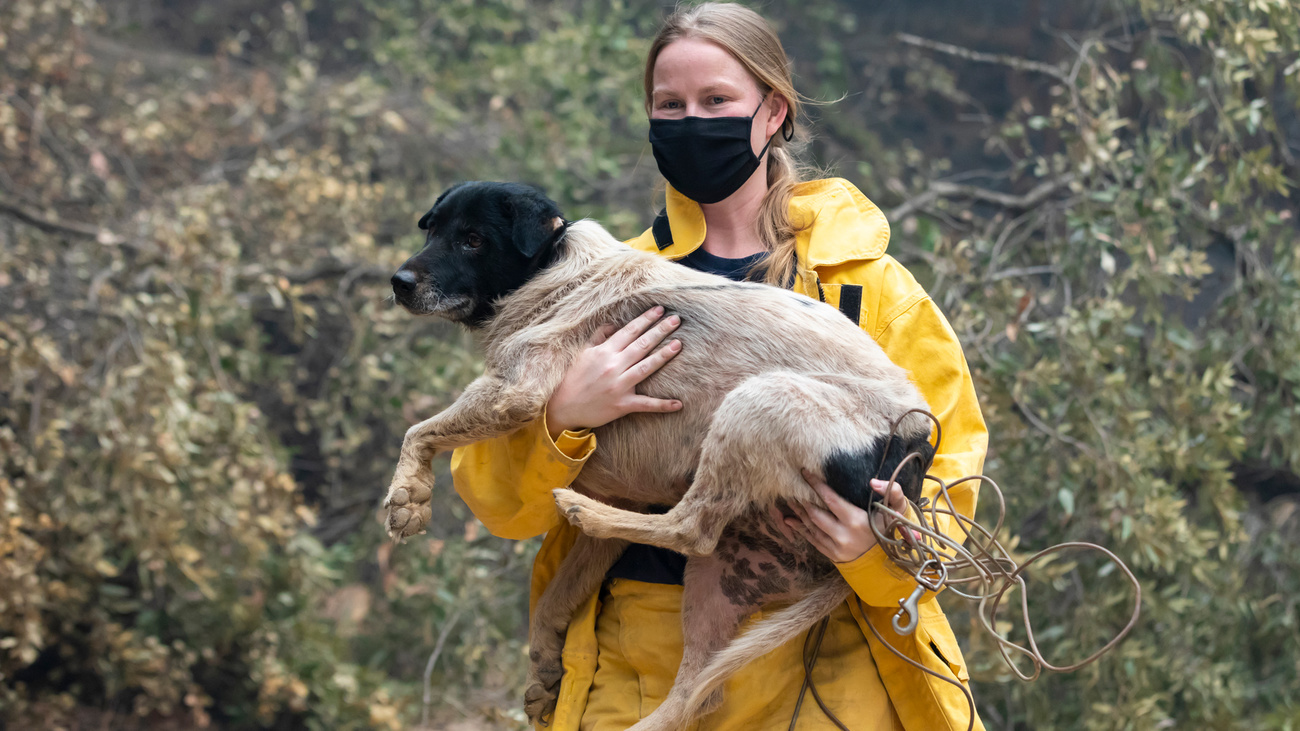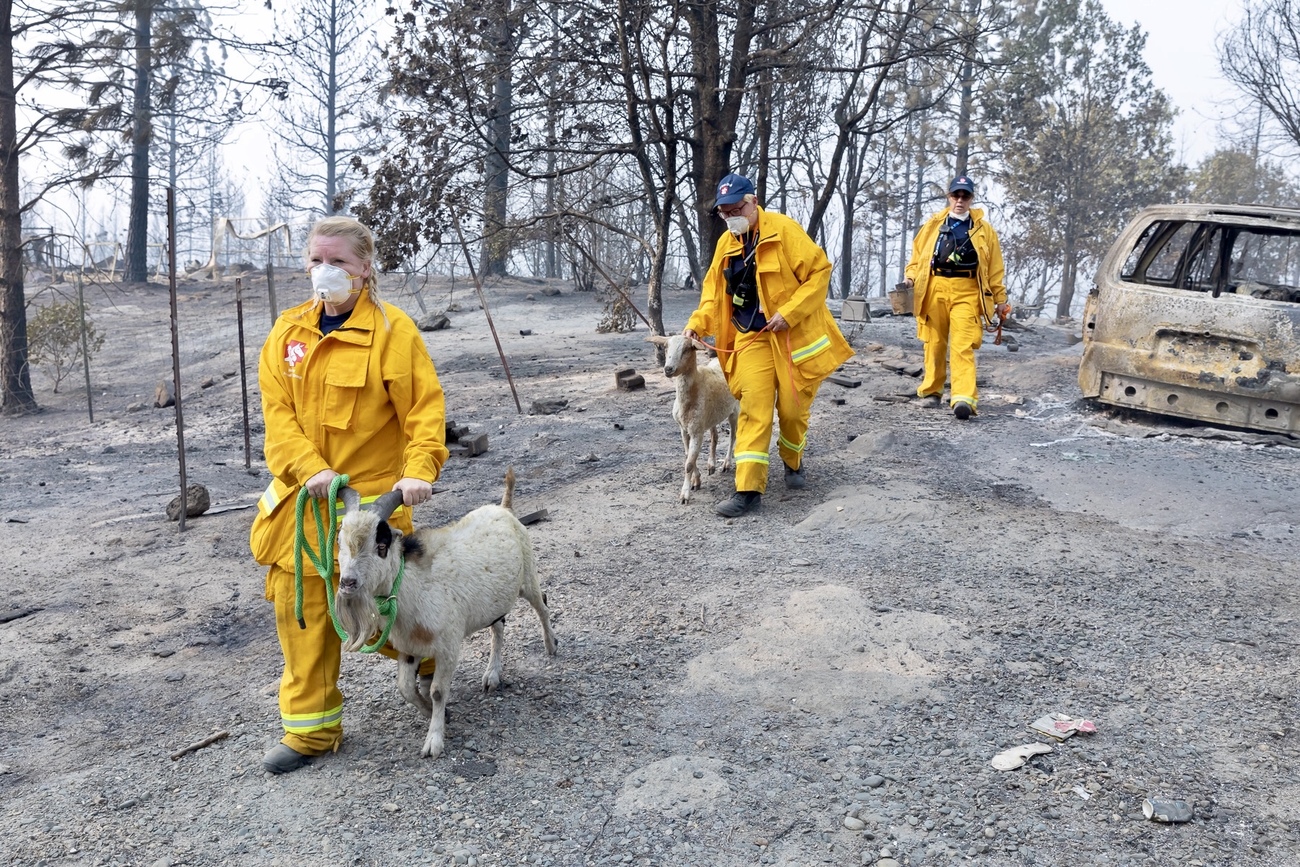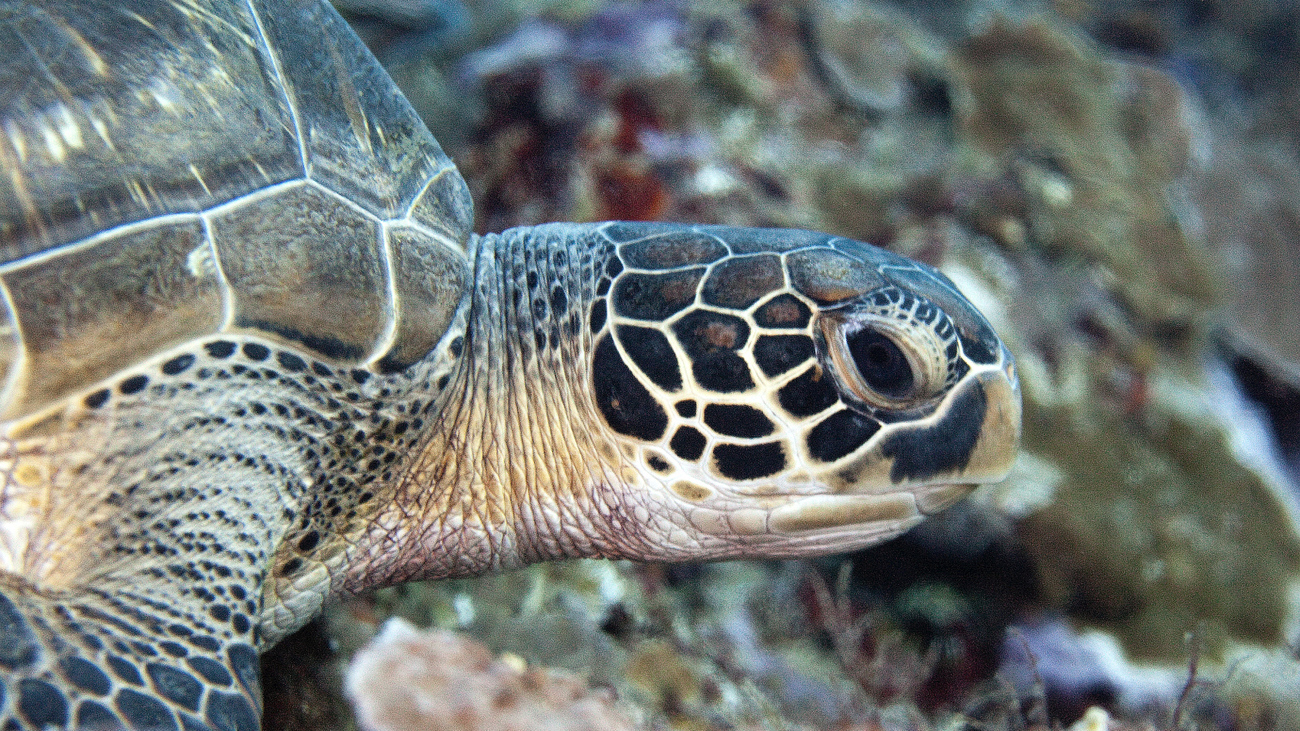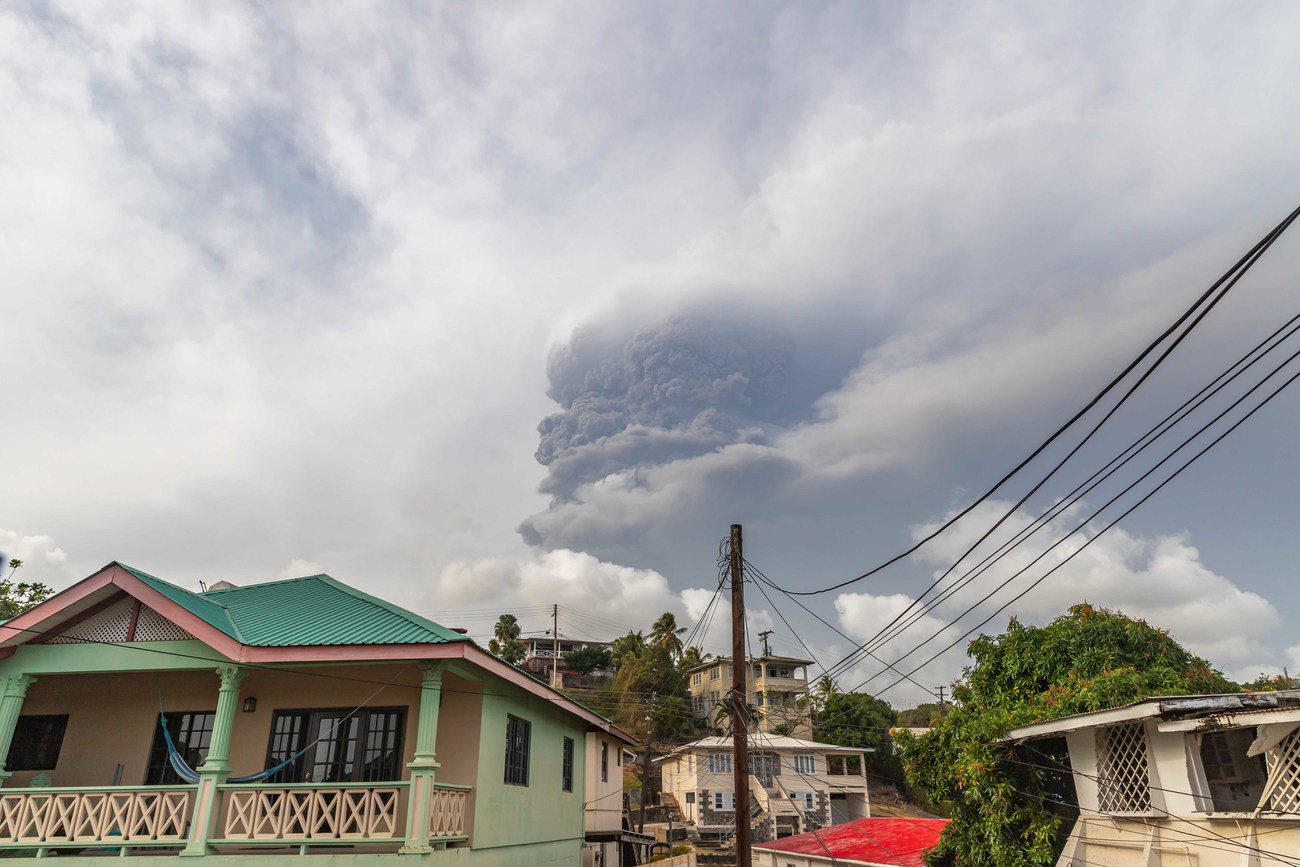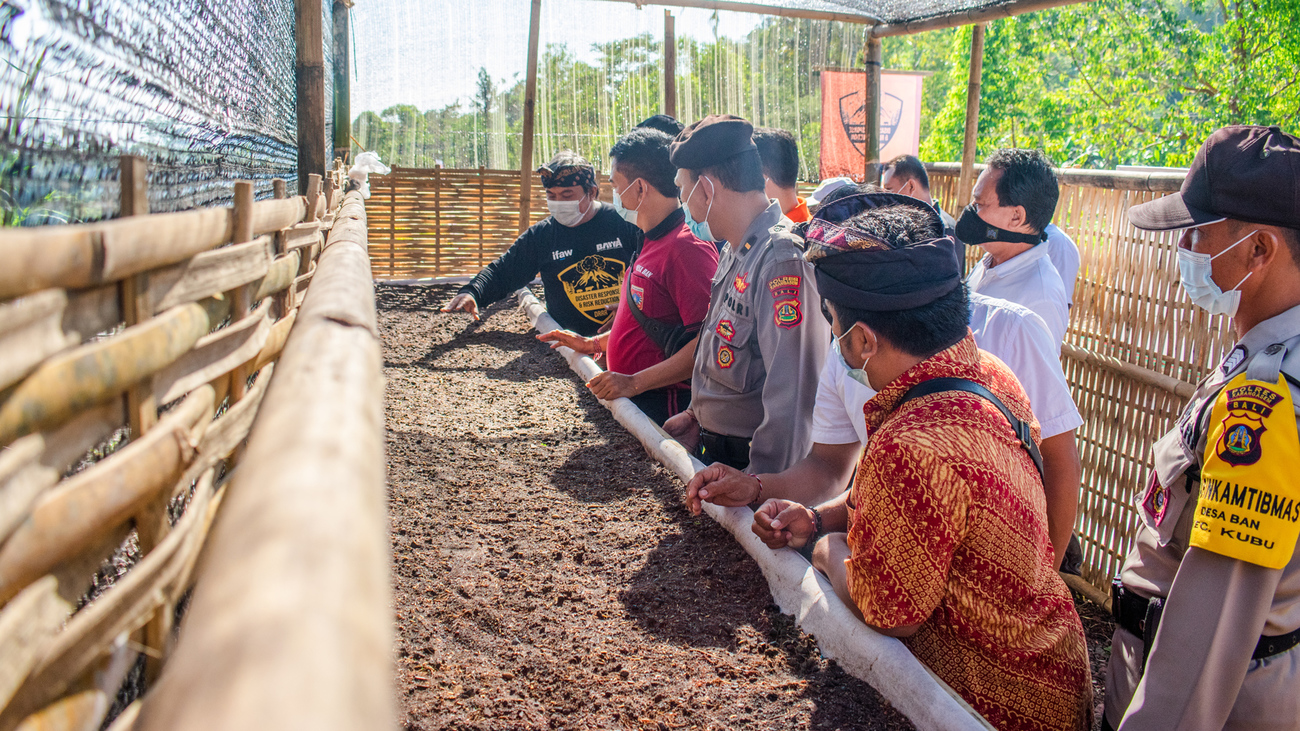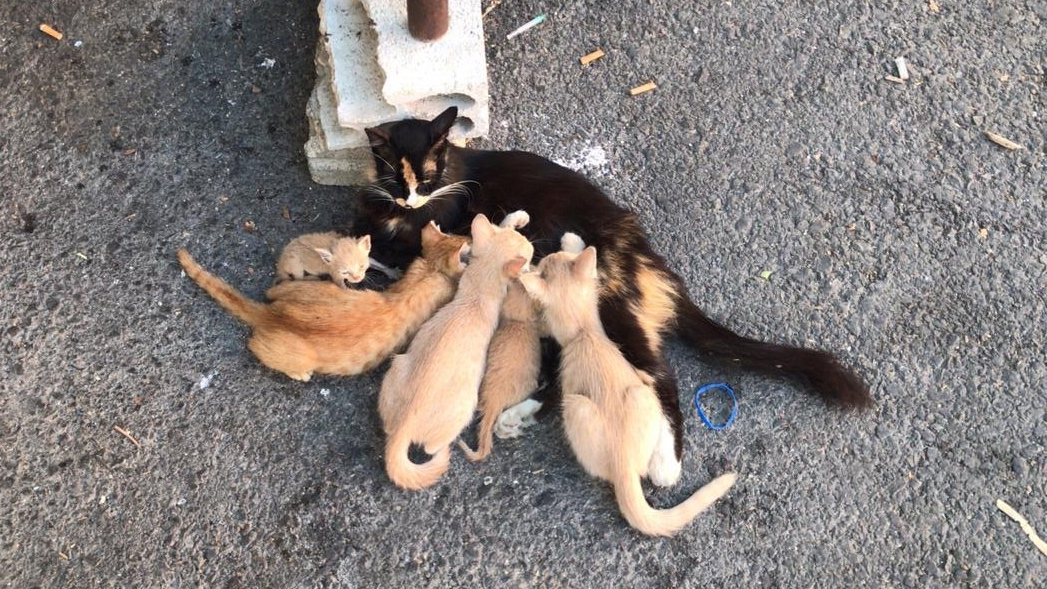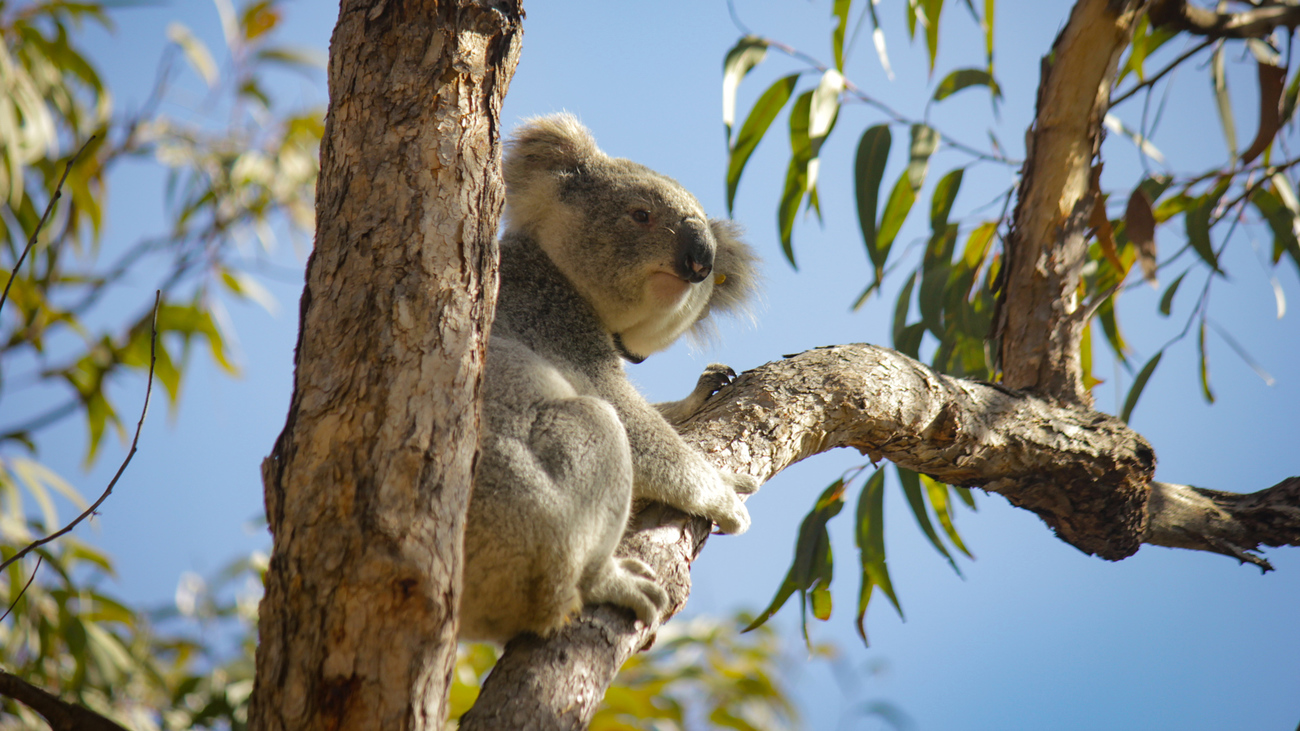disaster response
disaster response
Disaster events continue to increase in both frequency and severity around the world, unleashing devastation at a level we have not seen before. Humans are not alone in facing the immediate and long-term effects of these ongoing natural disasters—animals share our same burdens.
IFAW has witnessed first-hand the escalating intensity and destructiveness of natural disasters, whether a hurricane, an earthquake or a wildfire; these events are devastating to both people and animals. Our team of dedicated and trained experts operates globally to offer immediate emergency support when disasters hit and to develop resiliency planning in high-risk communities.
escalating threats
Anthropogenic drivers of climate change are contributing to the increasingly destructive impact of natural disasters on our world, which is putting added pressure on already- dwindling resources. In FY21, our Disaster Response program was busy around the world helping animals and people in the face of current disasters, from wildfires to cyclones, while also preparing for disasters of the future. We cannot solve this alone, but as an organization, we work to address every climate touchpoint possible.
Providing critical support for animals in Australia
In Australia, the east coast of the country was significantly impacted by prolonged heavy rain, strong winds and floods. This disaster impacted native wildlife, especially burrowing animals such as wombats. Many animals were displaced from their homes and injured while seeking shelter. We worked with our partners to provide critical emergency support for wombats and other native wildlife in need of care. Our team helped secure food, medication and rescue equipment, and covered transport costs for the teams who rescued orphaned or injured wildlife.
Severe weather impacted the coast of Victoria with smashing waves and strong winds. Our team immediately prepared for any requests for support and reached out to our partners for any unmet needs. Our partner, Mosswood Wildlife, reported a higher number of penguins in need of care and anticipated an even greater influx of penguins as the extreme weather system progressed. We worked closely with the team to provide the emergency care and supplies needed for rescued penguins.
Rescuing and caring for animals during the California wildfires
The California North Complex fires demonstrated a clear increase in the voracity of natural and man-made disaster events. At the request of our partner, North Valley Animal Disaster Group (NVADG), our team supported animal search and rescue, emergency sheltering and emergency operations center planning and logistics across Butte County.
This was the worst fire season on record for the state. The North Complex fires burned at a rate of four square kilometers (1,000 acres) every 30 minutes. We worked with NVADG to rescue and care for more than 600 animals.
Restoring coral damaged by a hurricane
During the 2020 hurricane season, our team provided critical assistance to the Colombian Archipelago of San Andrés, Providencia and Santa Catalina. This group of islands in the southwestern Caribbean suffered destructive impact from hurricanes Iota and Eta. The eye of Hurricane Iota caused historical devastation resulting in nearly 100% destruction across a 40-mile region near Providencia.
Our partner, Blue Indigo Foundation (BIF), assessed the damage to four coral reefs and requested emergency support for coral restoration, including debris removal, relocation and nursery installation. This project is an initiative with our Marine Conservation team, pointing to the importance of cross-programmatic collaboration in IFAW.
Responding to volcanic eruptions
Two volcanoes, one on the island of St. Vincent and one in the Democratic Republic of the Congo, violently erupted, spewing ash and toxic gases that caused thousands to evacuate.
LaSoufrière volcano on St. Vincent erupted in April 2021 and forced 16,000 people to evacuate. We immediately reached out to the Ministry of Agriculture and the Vincentian Society for the Prevention of Cruelty to Animals (VSPCA) to provide remote disaster management guidance, logistical support, and food, fresh water and supplies for dogs, cats and small pets.
When Mount Nyiragongo in the Democratic Republic of the Congo suddenly erupted, it displaced 30,000 people as large rivers of lava flowed toward the city of Goma. Following the eruption, a 4.7 magnitude earthquake struck the city, causing damage to roads, buildings and homes. We supported Sauvons Nos Animaux (SNA), an animal rescue organization located near Goma, to conduct a rapid needs assessment across impacted communities in the region.
creating a safer world
In FY21, IFAW launched an exciting initiative, the Risk Assessment & Mapping Project (RAMP) in partnership with our country offices and regional partners. With these assessments, our goal is to position our team and partners to be able to act quickly and precisely when disasters occur and minimize the disaster’s impact on animals and people through risk reduction initiatives. So far, RAMP assessments for countries including The Bahamas, Barbados, Cambodia, Dominica, France, Germany, Laos, Mexico, the Netherlands, and Thailand have begun and have already influenced policy actions that include animals in disaster planning.
In Australia, we recognized a critical need to further develop disaster preparedness plans among local wildlife caregivers and rescue groups. IFAW held its first virtual training workshop for our partner, Friends of the Koala in New South Wales, where we guided the team in creating their own emergency evacuation plan to help them better prepare for disasters.
Most countries around the world continued to be impacted by the COVID-19 pandemic and we received an overwhelming number of requests for emergency grant funds and operational guidance. Our primary goal was to help our partners, their teams and facilities safely serve during the pandemic. We addressed various requests from several organizations based in Thailand, Democratic Republic of Congo and the U.S.
We continue to work with communities near Mt. Agung in Indonesia, building community resilience for future disaster events. Following deadly mudslides, community members organized and hosted an event for National Disaster Preparedness Day, which included inviting the National Disaster Management Agency (BNPB) to launch a new forage nursery by engaging the community to plant soil-stabilizing trees. These trees will be planted as part of a restorative initiative in mudslide-prone areas. This project demonstrated how nature-based solutions and cross-programmatic initiatives can lead to positive actions that reduce the risks associated with climate change in communities where we work.
keeping families together
With the COVID-19 pandemic affecting economies around the globe, IFAW saw a need to help families—people and their beloved animals—stay together by providing urgent veterinary care assistance and pet food distribution. This effort was an extension of our COVID-19 relief work in FY20, called Keeping Families Together. In FY21, our goal was to provide pet food, pet supplies or veterinary support at a greatly reduced cost so families experiencing hardship would not have to relinquish their furry family members. In total, we helped more than 18,000 animals through this initiative.
Early in the pandemic, IFAW and our partners in the U.S. focused on west coast communities and then assisted communities in Mississippi later in 2021. IFAW’s disaster program has deep roots in the Mississippi area and we worked with our team on the ground there to assess needs and to intervene for the benefit of families and their pets. IFAW’s compassionate efforts ranging from food distribution to veterinary care and beyond were critical for the community to help weather such difficult circumstances.
Planning for disasters
As a founding member of the National Animal Rescue and Sheltering Coalition (NARSC) in the U.S., IFAW worked with coalition partners as well as state and federal authorities to understand more about COVID-19 virus biology and its effect on pets. These efforts continued in tandem with our outreach efforts on disaster response and preparedness during the challenges of a global pandemic when travel was severely limited. IFAW led training sessions and participated in seminars to assist state preparation in disaster planning and management during a pandemic, while also working with NARSC partners to develop new emergency sheltering guidelines and other valuable resources.
Recovering from disaster in Beirut
In August 2020, Beirut, Lebanon, experienced a devastating explosion that impacted a six-mile radius around the city’s port. While humanitarian relief agencies rushed to help people affected by the blast, our partner, Animals Lebanon, began to rescue animals and prepare their facilities for an influx of animals in need. We have worked with Animals Lebanon for several years and immediately reached out to make sure their team was safe and to offer our support.
Animals Lebanon reported their office was dangerously close to the blast and suffered a tremendous amount of damage, yet within two hours they had already started to save many animal survivors. Their team worked 24/7 to rescue pets and other animals. In addition to animal search and rescue efforts, Animals Lebanon created a dispatch for owners to report lost pets or inquire if their pet was among those the team had rescued. They received more than 430 requests for help and 320 volunteers worked to search, rescue and care for animals. Eighty-six animals received emergency veterinary care. In just a few days, several dozen pets were reunited with their families.
This is the work that keeps us going— seeing families reunited so they can comfort each other as they recover together.
innovation in studying post-release koalas
This year, we supported two studies focused on the post-rehabilitation survival of released koalas in eastern Australia. These studies filled a significant and long-standing knowledge gap in the wildlife rehabilitation space about the survival success and welfare outcomes of rehabilitated koalas in the wild.
Monitoring bushfire-affected koalas in Victoria
In our continued work to rebuild after the catastrophic Black Summer bushfires of 2019–2020, we provided critical funding toward Zoos Victoria’s study into the post-release survival, health and welfare of 14 fire-affected koalas following rehabilitation.
Zoos Victoria released the koalas, each fitted with radio and GPS collars, back into the wild in eastern Victoria in December 2020 and monitored their health for several months. We specifically supported the veterinary aspect of this project, which allowed specialist vets to track these koalas and conduct critical health checks.
The findings of this study, the first of its kind in Victoria, will be published in a peer-reviewed journal to help wildlife rehabilitators across Australia understand the behaviors and welfare outcomes of bushfire-affected koalas that have been rehabilitated and released into the wild.
Monitoring rehabilitated koalas in New South Wales
We also worked with Science for Wildlife in their study, which is being undertaken in partnership with the National Parks and Wildlife Service with support from the Department of Planning, Industry and Environment under the NSW Koala Strategy. This study radio-tracked released rehabilitated koalas in the Greater Western Sydney region of NSW.
Through our support of and involvement in this study, the first of its kind in the region, we aim to help inform the sector’s understanding of the factors contributing to a koala’s successful reintegration in the wild.
IFAW and NSW government funding allowed for the extension of this critical project and the purchase of a drone to assist the team in radio-tracking koalas in remote areas. Our support has allowed the team to better understand what actions can be implemented during the rehabilitation process to ensure koalas survive and thrive when released back into the wild.
As we continue to rescue, rehabilitate and release koalas back into the wild, these projects will aid us in understanding the best practices and protocols that we can implement to help koalas survive and thrive in the wild.
Stay in the know. Be ready to act.
